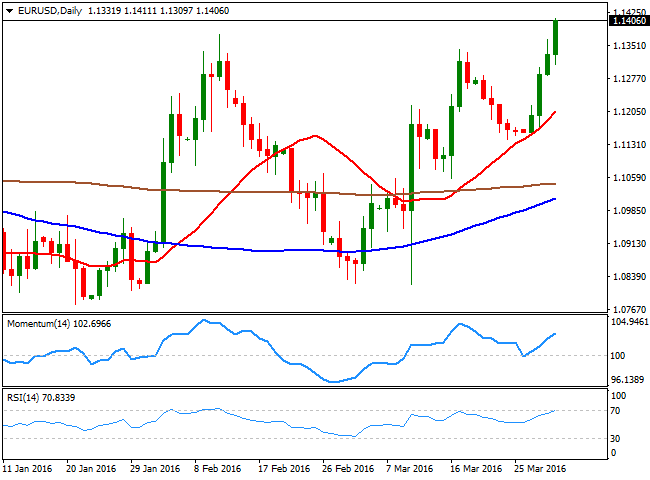Nonfarm Payrolls: Who Cares?
A new month starts and with it we get a
new US Nonfarm Payroll report. The US economy is expected to have added
205K new jobs in March, the unemployment rate is expected to remain
steady at 4.9%, while wages are expected to pick up after the decline
seen in February.
But honestly, who cares about the Nonfarm Payroll report? It has been clear that over the past year the release has done little to affect FED's decision.
US policy makers are clearly comfortable on how the employment sector
is doing and is hardly a factor these days when it comes to consider the
upcoming economic policy. Of course, if the reading is extremely
disappointing, it will play against the greenback. But a reading in line
with expectations, or even better, let's say, with 240K new jobs added,
will hardly help the American dollar to change its bearish bias.
The once considered most relevant part
of the report, the headline, won't be as relevant as wages, as salaries
are directly correlated with consumption and therefore inflation. And
this last is the one and only concern of the FED, regardless whatever
they say on the matter. In February, US wages declined 0.1%
compared to the previous month, resulting in a 2.2% annual gain. Data
released this Monday showed that personal income rose 0.2%, but the
gains came in areas that won’t do much to boost consumption, with the
largest add in rental income that rose 1%. Government social benefits
rose by 0.5%, while employer contributions to employee pensions and
insurance rose 0.3%.
And without consumption inflation will remain depressed and the FED will maintain the on-hold stance.
The most likely scenario is that the
report will come in line with expectations, given that the ADP survey
released on Wednesday showed that the private sector added roughly
around 200,000 new jobs in March. Weekly unemployment claims have
resulted slightly higher this past week, reaching 276K, but the 4-week
average decreased to 2.173M, quite encouraging.
Anyway a positive reading may boost the greenback in the short term,
particularly if wages beat expectations, but won't be enough. Dollar's
trend depends on the FED and this last depends on inflation. Payrolls
are no longer the main market mover, and is time to say it.
EUR/USD levels to watch

The EUR/USD pair trades around 1.1400, a
fresh year high as the market keeps selling the greenback. The daily
chart shows that the technical indicators are reaching overbought
territory, whilst the 20 SMA has offered a strong support earlier this
week and currently stands 200 pips below the current level, supporting
the ongoing bullish trend, although too far away to be relevant on
Friday. There is a major static resistance in the 1.1460, as the pair
retreated from it multiple times during the past 2015. Should the price
break above it, large stops will be triggered, fueling the advance up to
1.1530, February 2015 monthly high. A weekly close above the 1.1500 level, should leave doors open for an advance up to 1.1710 next week.
The immediate short term support is at 1.1375, last February high, followed then by the 1.1280/90 region. A break below this last can signal a deeper downward corrective movement towards 1.1200, where buying interest is expected to resume.
USD/JPY levels to watch

The Japanese yen holds to its recent
strength and trades firmly lower, with selling interest surging on
approaches to the 113.00 level, which means that a strong report and a
break above this level is required to begin thinking on a bullish move.
The daily chart shows that the technical readings are far from
supporting a recovery, but more likely signaling a retest of the 111.00
region, given that the 100 and 200 SMAs have accelerated their declines
far above the current level, while the RSI heads south around 42.
Below 111.90, the pair has little in the way until 111.00
while below this last, the decline can extend another 100 pips before
the week is over, particularly if the US employment report disappoints
big. Some sort of intervention coming from the BOJ could be expected in
this case, as the level is probably the line in the sand for policy
makers.
Above 113.00 on the other hand, the price can extend up to 113.70 first and 114.60 later, but it will take a recovery beyond 115.00, something quite unlikely at this point, to see an u-turn in the pair.
by
Valeria Bednarik
|
FXStreet
(Market News Provided by FXstreet)



